THE EXTRAORDINARY LIFE OF THOMAS J. BROWER
The First Gringo in Dominical
by Jack Ewing
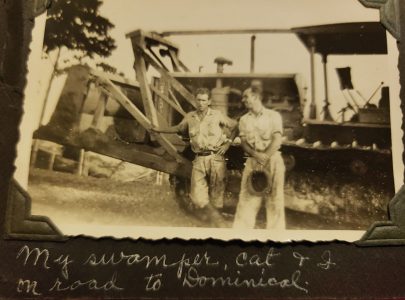
When Thomas J. Brower first came to Costa Rica World War II was raging, and the US was worried about the Panama Canal. If it were to fall into enemy hands allied naval capacity would be severely crippled, and in the late 1930’s a land route, imperative for the defense of the canal, did not exist. Building one became top priority, and the Pan-American highway was the result. The US government contracted with the Charles E. Mills Construction Company to build the 300 km stretch of road from Cartago to the Panamanian border.
Tommy Brower landed in Dominicalito with the construction company in 1940. A crude dock was built and heavy machinery unloaded. Part of the crew, with the help of local labor, built a camp for the company workers, and the rest started building a road to San Isidro. Once the trocha, as the rough cut road was called, reached San Isidro the workers split into two groups with one working toward Palmar Norte and the other toward Cartago where they would eventually meet up with other crews working from those locations toward San Isidro. It was a major operation, the magnitude of which had never been seen in Costa Rica.
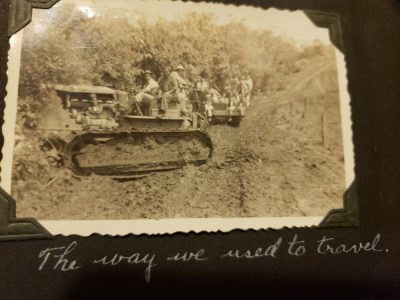
Thomas Brower began as a bulldozer operator and was later promoted to supervisor. As such he was stationed in San Isidro, which was to become his home for the next 10 years. It was there that he met a lovely young lady named Consuelo Aguerro, 10 years his junior, and married her. For the first decade of their marriage the couple lived in San Isidro. Five of their seven children, four girls and one boy, were born during that decade. The last two boys were born after the family had moved to Dominical. Regardless of where they were living at the time Doña Consuelo always went to San Jose to bring her new bundle of joy into this world. In those days it was common for women to give birth at home with the assistance of a midwife, but Tommy wasn’t about to risk losing the love of his life during childbirth for lack of qualified medical attention and a modern hospital.
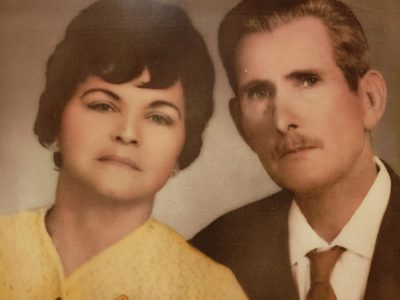
Once his work with the construction company was finished Mister Tommy, as he came to be called affectionately by all who knew him, became involved in other business ventures. In San Isidro he and Consuelo were especially remembered for all of the wonderful things they did for the community. Their second daughter Sara Isabel remembers the Christmas parties they sponsored for the poorer children in the area who weren’t likely to receive any gifts otherwise. The couple was also a driving force in the founding of the Red Cross in San Isidro, and donated the lot where the original headquarters was built. They were considered to be important community leaders.
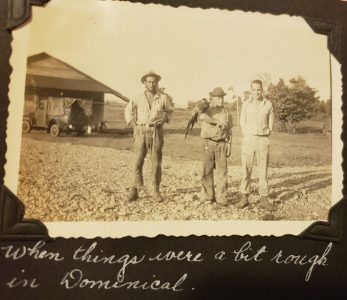
The Brower family was living in San Isidro in 1948 when the revolutionary troops of Don “Pepe” Figueres” arrived to claim the city. In view of the impending battle the head of the municipal police came to their home and draped an American flag on the front of the house so that the combatants on both sides would know that the inhabitants had nothing to do with the civil war. On March 16, 1948, government troops under the command of General Tijerino arrived by sea and landed in Dominicalito. They marched to San Isidro where they clashed with the revolutionaries in a fierce battle that lasted 36 hours. General Tijerino was defeated and killed. A victorious Don Pepe returned to San Jose, which he captured, and officially ended the war. On April 20 a second detachment of troops still loyal to the now deposed and exiled government, landed in Dominicalito and marched to San Isidro. They dug in on the hill where today we find the installations of the Ministry of Transport. Either this detachment didn’t know that the civil war was over, or just didn’t want to give up, but when Don Pepe’s troops returned to San Isidro, what ensued was more of a slaughter than a battle. There were so many casualties that the community had to build a make-shift crematorium to dispose of the corpses. Fortunately the combatants on both sides respected the American flag on the Brower home, and no one in the family was harmed, nor was their property damaged.
In 1952 the Browers moved to Dominical and built the Dominical Hotel, a beautiful two story structure, on the lot where today we find Restaurant El Coco. The venture was a resounding success. People came from as far away as Cartago to stay at the hotel. In spite of the fact that they had to ford a river and walk the last three kilometers to get there it became a weekend party destination for the people of San Isidro. Two of the children, Sarah Isabele and Thomas Jefferson, were too young to join the parties, but they remember peeking through the cracks in the wall to watch the adult festivities. Later Mr. Tommy, in partnership with Misael Ceciliano, built the Miramar Hotel and Restaurant where today stands Roca Verde. Once every two weeks a pilot named “Sapi” brought in food and liquor for the hotels in his small plane. A lady named Doña Angela was in charge of a telegraph that connected Dominical with the outside world, and she took care of sending the orders to Sapi. A fisherman named “Coco” brought the fish. Tommy loved to hunt for oysters on the rocks between Dominical and Dominicalito which are now known “Rocas de Amancio”. The rainforest provided meat for the restaurants. Tommy and Consuelo used to accompany Manuel Angel Sanchez on his hunting excursions into the jungles of Hacienda Barú, where he was the foreman. Their quarry was mostly collared peccary and paca, but great tinamou and great curassow also adorned the plates of the guests at times.
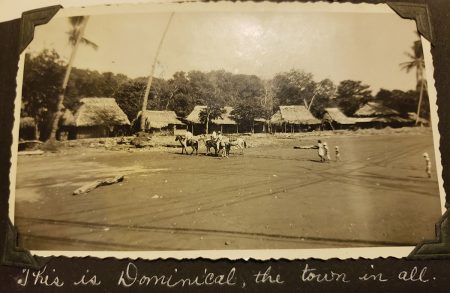
Among her other talents Doña Consuelo was a midwife who assisted many women during childbirth. Half a dozen of Doña Blanca Valverde’s children were delivered by Doña Consuelo. The year 1955 brought the worst flooding in the history of Costa Rica. When the torrential rains hit the area, Doña Blanca was seven months pregnant, was suffering from a relapse of malaria, and had a nasty infection in her foot. The water rose so high that the entire town of Dominical had to take refuge on the second story of the hotel.
After six days of pouring rain the storm ended, the water level dropped, and a Red Cross boat was able to reach Dominical. Mister Tommy and other neighbors helped Manuel Sanchez, Doña Blanca’s husband, carry her to the boat. Doña Consuelo accompanied her to Puntarenas and from there on to San Jose to the San Juan de Dios hospital by bus. After three weeks in the hospital and three weeks with an uncle in Escazú Doña Blanca, by then eight and a half months pregnant, managed to return to Dominical—bus to San Isidro and small plane to Dominical – where, two weeks later, she was assisted by Doña Consuelo in giving birth to a healthy son.
The Browers were active participants along with Rafael Angel Aguero and Marina Badilla in the establishment of the first school in Dominical. Doña Marina was the first teacher. Tommy and Consuelo’s children attended the school together with the rest of the children in town.
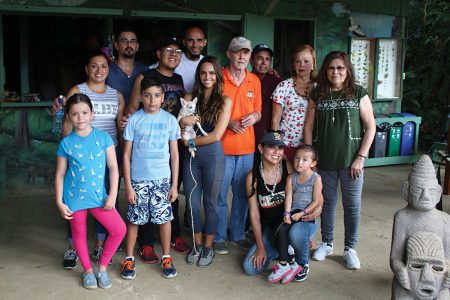
In 1968 the Brower family moved to San Jose for a year and then to Stanton, California. Today the oldest daughter, Hilda, lives in Norway. Sarah Isabel in San Jose, Costa Rica, Jeannette in South Carolina, and Thomas Jefferson, Donald Francis, and John Carl are all in California. Granddaughter Kelly lives in Dominical where she owns and operates the Medusa Beauty Salon. My wife, Diane says it’s a great place to have your hair done. I owe Kelly a big thank you for introducing me to the rest of the family whom I had the great pleasure of meeting in November of 2018. I also want to thank another granddaughter Yessenia for the wonderful photos she scanned from the family album. And of course I am thankful to the entire family for all of the information they supplied to help document this history.

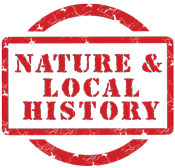

I am a relative residing in Walnut Grove California. My great great great Grandmother was Tommy’s mother. I truly appreciate this story.
Thank you.
C.J. Jensen